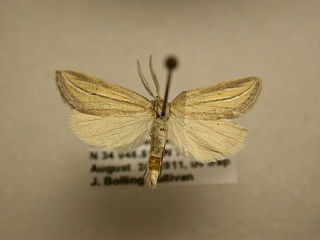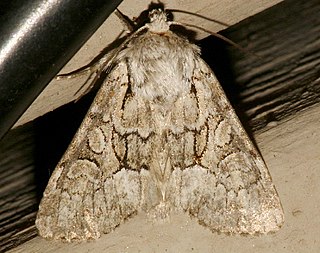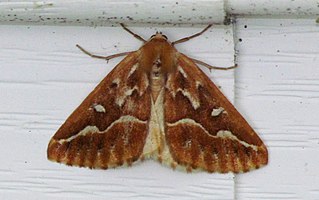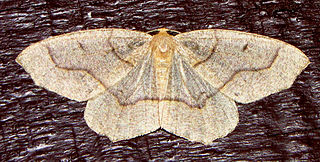
Crambidia is a genus of moths in the family Erebidae. The genus was described by Packard in 1864.

Diptychophora is a genus of moths of the Crambidae family.

Aseptis is a genus of moths of the family Noctuidae. The genus was erected by James Halliday McDunnough in 1937.

Zale is a genus of moths in the family Erebidae erected by Jacob Hübner in 1818.

Doryodes is a genus of moths in the family Erebidae.

Eremobina is a genus of moths of the family Noctuidae erected by James Halliday McDunnough in 1937.

Caripeta is a genus of moths in the family Geometridae erected by Francis Walker in 1863.

Eulithis is a Holarctic genus of moths in the family Geometridae erected by Jacob Hübner in 1821.

Lambdina is a genus of moths in the family Geometridae first described by Hahn William Capps in 1943.

Neoalcis is a monotypic moth genus in the family Geometridae erected by James Halliday McDunnough in 1920. Its only species, Neoalcis californiaria, the brown-lined looper, was described by Packard in 1871.

Protoboarmia is a genus of moths in the family Geometridae described by James Halliday McDunnough in 1820.

Caenurgina crassiuscula, the clover looper or range grass moth, is a moth of the family Erebidae. The species was first described by Adrian Hardy Haworth in 1809. It is found from coast to coast in the United States and adjacent parts of Canada, in the west to the Northwest Territories, Yukon, and Alaska.

Caenurgina erechtea, the forage looper or common grass moth, is a moth of the family Erebidae. The species was first described by Pieter Cramer in 1780. It is found from coast to coast in the United States and adjacent parts of Canada. It is not found in Newfoundland, New Brunswick, Prince Edward Island, Yukon, or the Northwest Territories. The wingspan is 30–42 mm. Adults are on wing from March to November depending on the location.
Coenochroa bipunctella, the sand dune panic grass moth, is a species of snout moth in the genus Coenochroa. It was described by William Barnes and James Halliday McDunnough in 1913, and is known from the United States, including Florida, Arizona and Maryland.
Eupithecia sabulosata is a moth in the family Geometridae first described by James Halliday McDunnough in 1944. It is found in the US state of California.
Eupithecia sheppardata is a moth in the family Geometridae first described by James Halliday McDunnough in 1938. It is found in North America, including New Brunswick, Ontario, Quebec, Maine and New York.
Eupithecia neomexicana is a moth in the family Geometridae first described by James Halliday McDunnough in 1946. It is found in the United States in western New Mexico and Arizona.
Eupithecia carneata is a moth in the family Geometridae first described by James Halliday McDunnough in 1946. It is found in the US states of Utah and Arizona.
Prorella ochrocarneata is a moth in the family Geometridae first described by James Halliday McDunnough in 1949. It is found in the US state of Arizona.

Protorthodes oviduca, the ruddy Quaker moth, is a moth in the family Noctuidae. It is found across boreal and temperate areas of Canada and the northern United States with extensions in the eastern United States, ranging to central Florida and southern Alabama, and in the mountains in the West as far south as Colorado and Utah. In some areas it is found only in sandy habitats. The species was first described by Achille Guenée in 1852.













